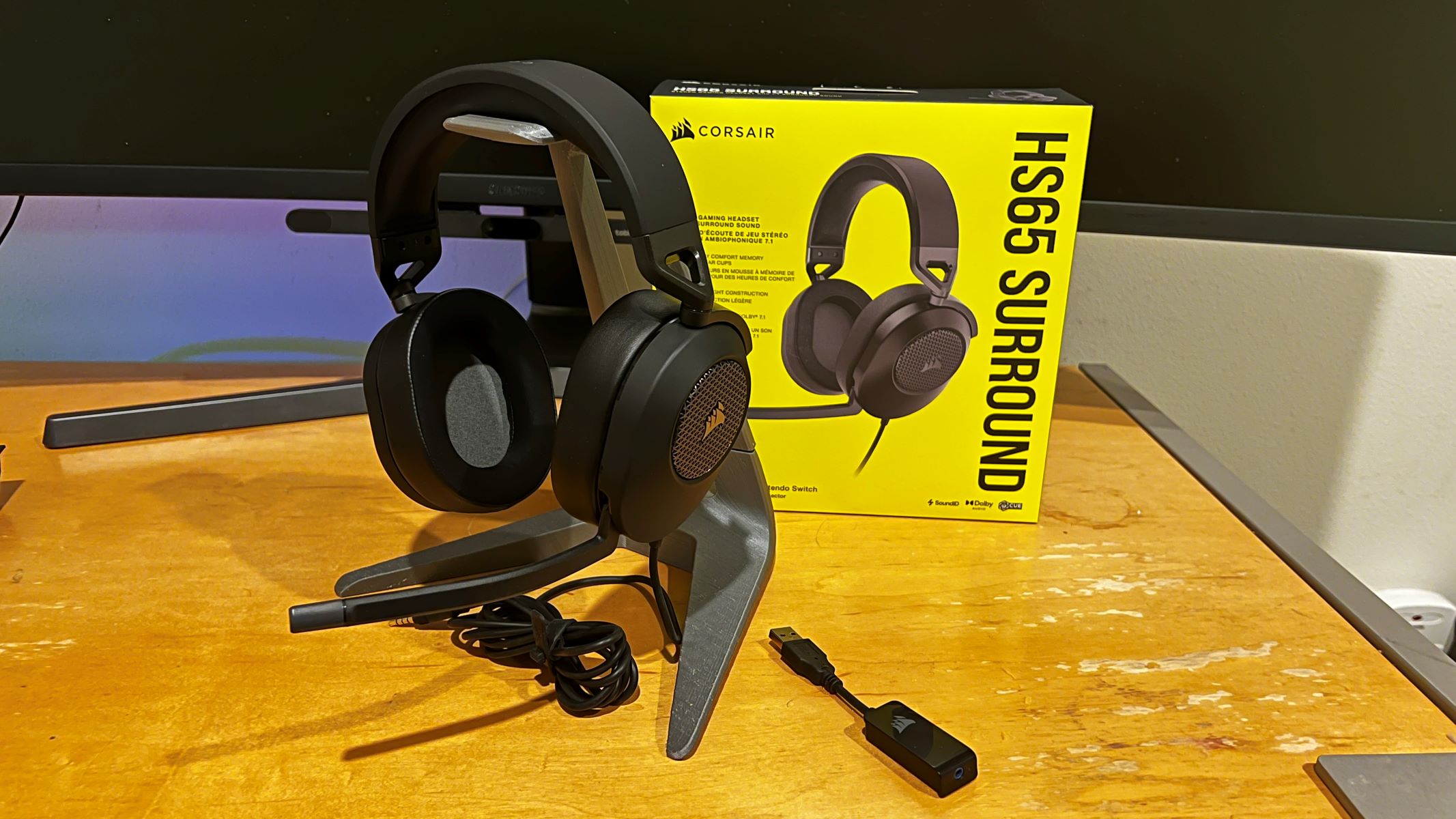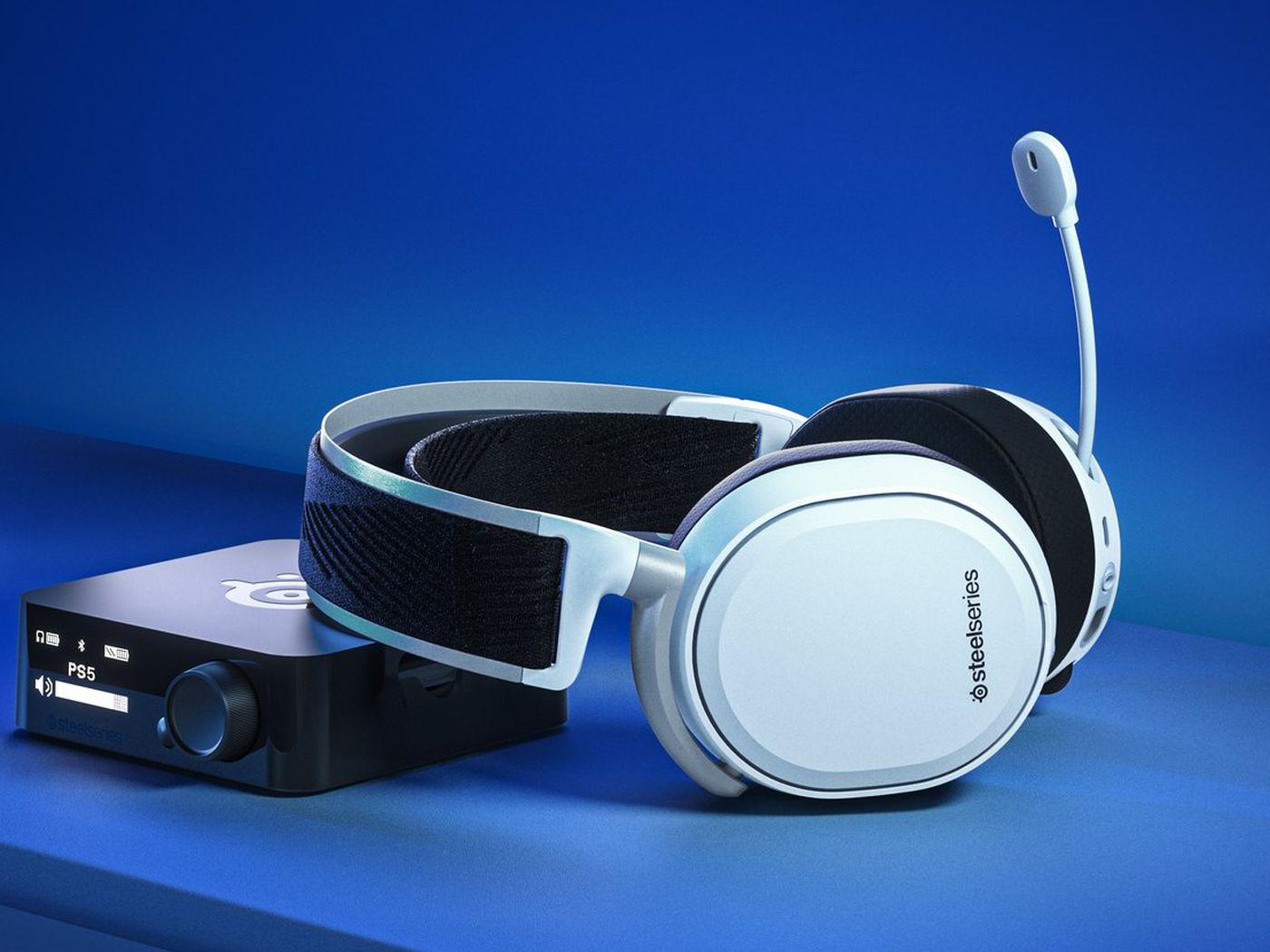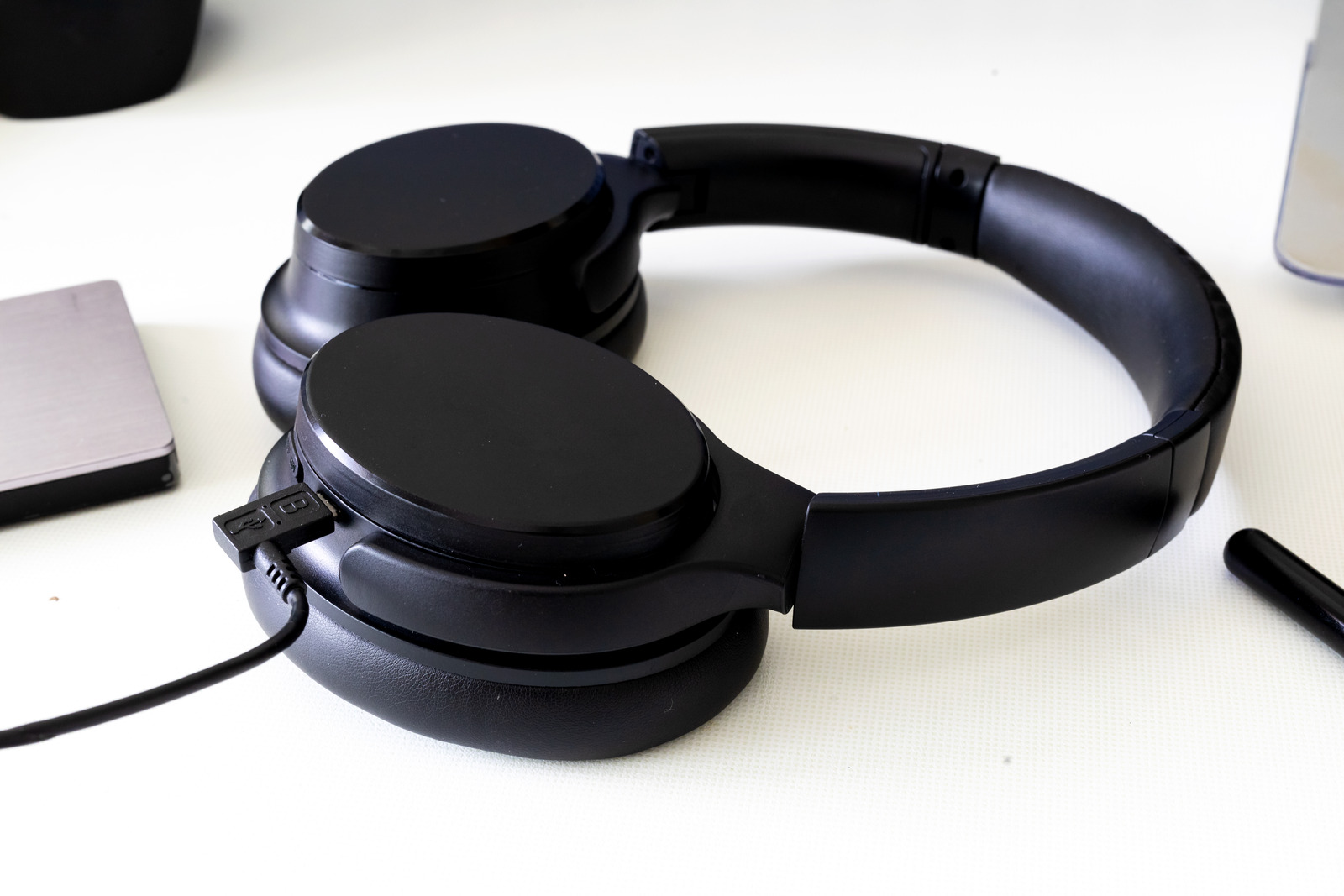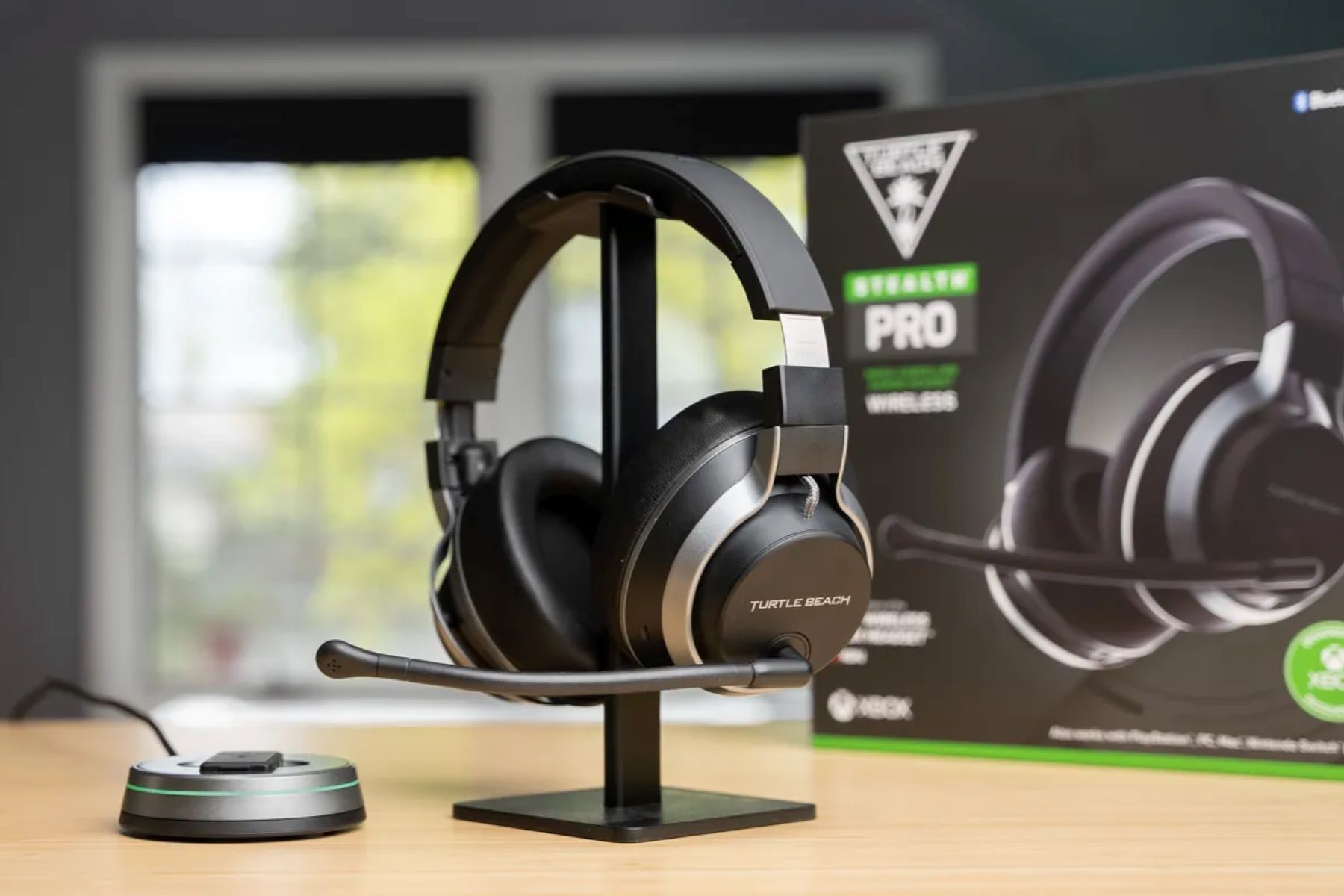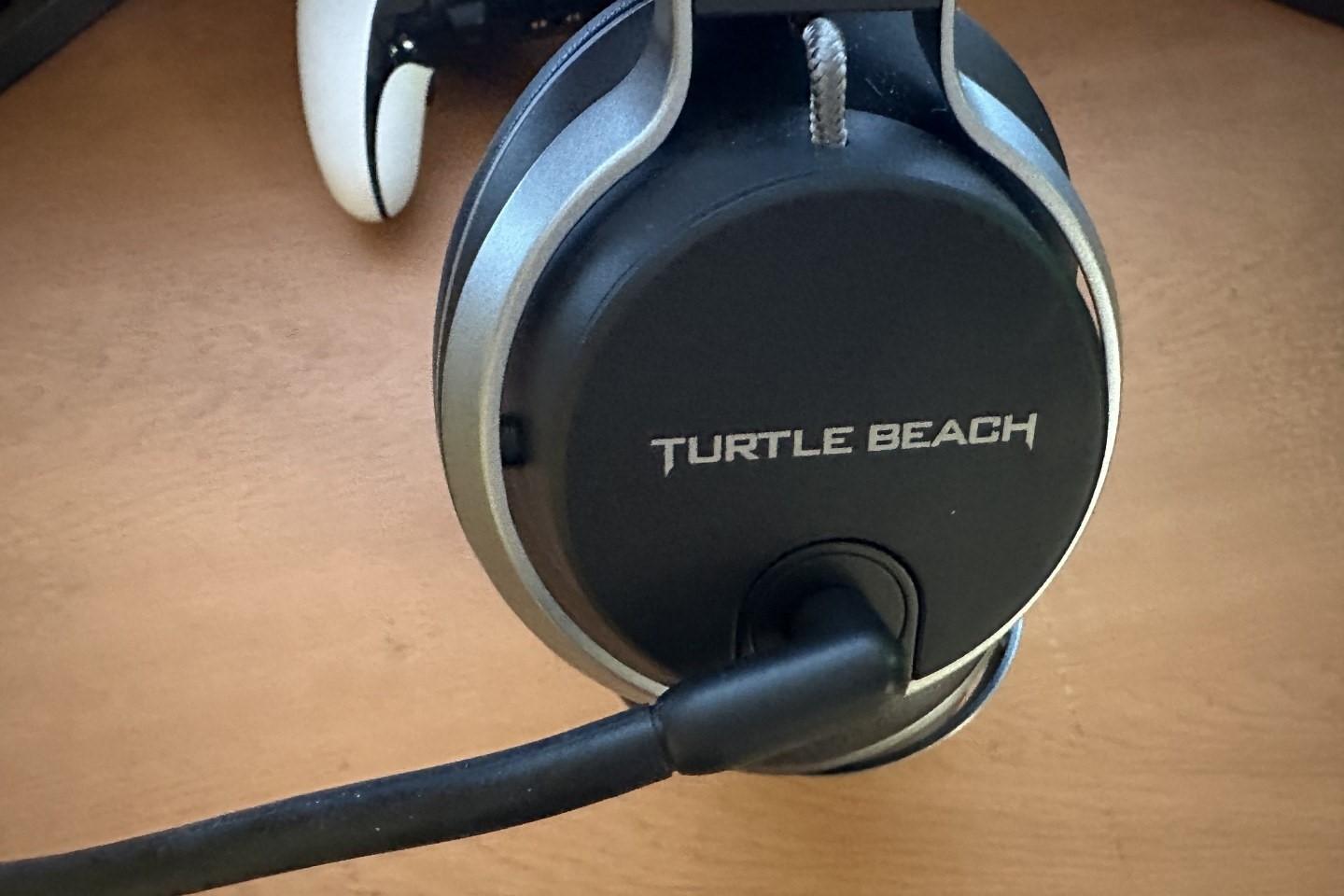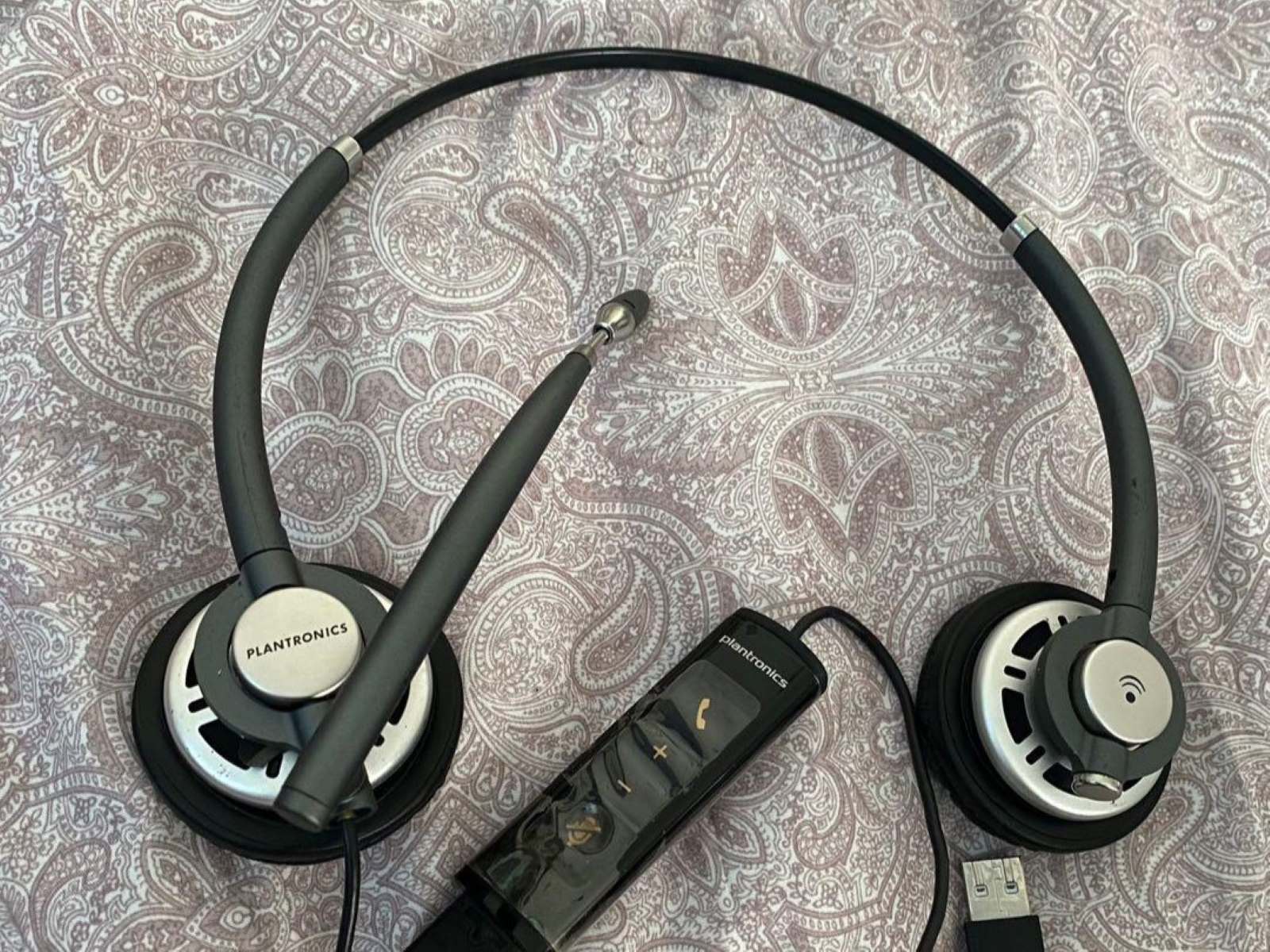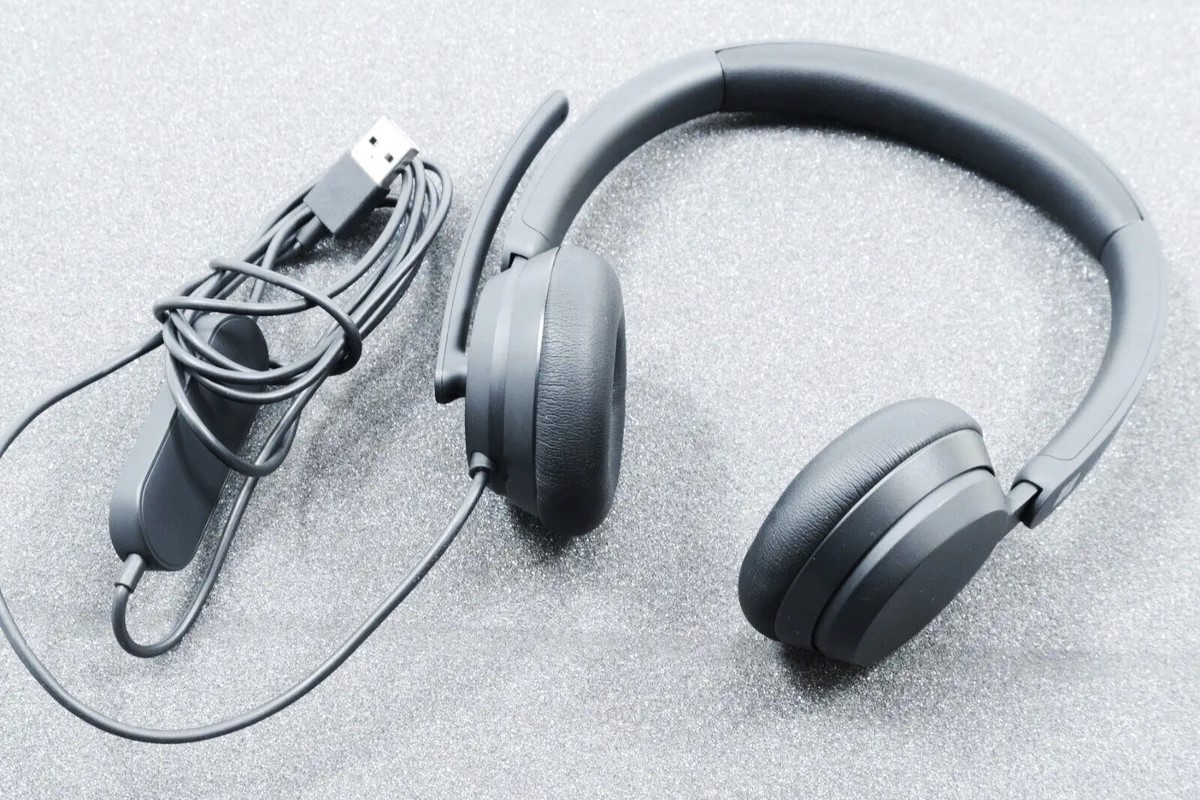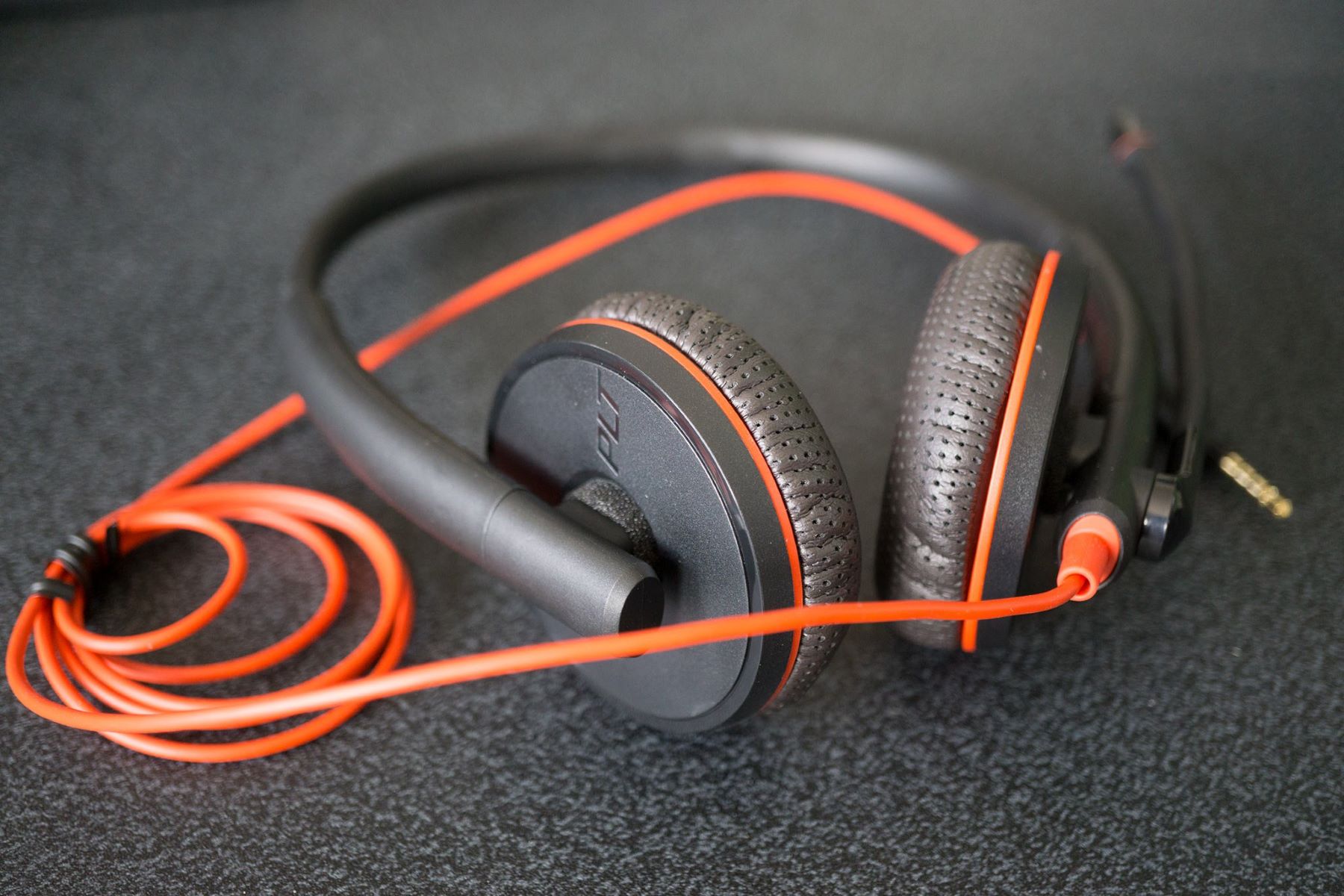Introduction
Corsair headsets are renowned for their exceptional audio quality and comfortable designs, making them a popular choice among gamers, content creators, and audio enthusiasts. However, like any electronic device, Corsair headsets may encounter issues that can disrupt the user experience. From sound malfunctions to microphone problems, troubleshooting these issues can be a daunting task for users.
In this comprehensive guide, we will delve into the common issues that users may encounter with their Corsair headsets and provide step-by-step troubleshooting solutions to address these challenges. Whether you're experiencing a lack of sound, microphone malfunctions, poor audio quality, or difficulties with your headset being recognized by your computer, this guide aims to equip you with the knowledge and strategies to resolve these issues effectively.
By following the troubleshooting steps outlined in this guide, you can potentially save time and effort, avoiding the frustration of dealing with headset woes. Let's dive into the world of Corsair headsets and unravel the mysteries behind these common issues, empowering you to optimize your headset's performance and enjoy a seamless audio experience.
Common Issues with Corsair Headsets
Corsair headsets, known for their exceptional audio performance and ergonomic designs, are not immune to technical glitches that can impede the user experience. Understanding the common issues that users may encounter with Corsair headsets is crucial for troubleshooting and resolving these challenges effectively. Below are the prevalent issues that users may face with their Corsair headsets:
-
No Sound: One of the most frustrating issues users encounter is the absence of sound from their Corsair headsets. This can disrupt gaming sessions, audio playback, and communication, leading to a subpar user experience.
-
Microphone Not Working: Many users rely on the microphone functionality of their Corsair headsets for in-game communication, voice calls, and content creation. When the microphone fails to function as intended, it can hinder communication and content production activities.
-
Poor Audio Quality: Despite the renowned audio performance of Corsair headsets, users may experience instances of poor audio quality, including distorted sound, muffled audio, or inconsistent output.
-
Headset Not Recognized by Computer: Some users may encounter issues where their Corsair headsets are not recognized by their computers, leading to connectivity issues and the inability to utilize the headset's features effectively.
By acknowledging these common issues, users can proactively troubleshoot and address these challenges, ensuring that their Corsair headsets deliver the exceptional audio performance and functionality they are known for.
Troubleshooting Steps
When encountering issues with your Corsair headset, it's essential to approach the troubleshooting process systematically to identify and resolve the underlying causes. By following these step-by-step troubleshooting methods, you can effectively address common issues and restore your headset's optimal functionality.
-
Verify Physical Connections: Begin by ensuring that all physical connections, including the headset's audio and microphone jacks, are securely plugged into the appropriate ports on your computer or gaming console. Additionally, check for any frayed or damaged cables that may impede proper connectivity.
-
Check Volume and Mute Settings: Confirm that the volume levels on your headset, computer, or gaming console are appropriately adjusted, and the headset's mute function is disabled if you are experiencing a lack of sound or microphone issues.
-
Update Device Drivers: Visit the official Corsair website or utilize the Corsair Utility Engine (CUE) software to check for available driver updates for your headset. Installing the latest drivers can resolve compatibility issues and enhance overall performance.
-
Test on Alternate Devices: To isolate the issue, connect your Corsair headset to a different computer, gaming console, or mobile device to determine if the problem persists across multiple platforms. This can help identify whether the issue is specific to your primary device.
-
Reset Audio Settings: Within your computer's audio settings or gaming console's audio preferences, reset the audio output and input settings to default. This can rectify configuration conflicts that may be affecting your headset's performance.
-
Inspect Microphone Settings: If your microphone is not functioning correctly, access your device's audio settings to ensure that the microphone input is selected as the default recording device. Adjust microphone sensitivity and noise cancellation settings as needed.
-
Update Firmware: Check for firmware updates for your Corsair headset through the manufacturer's official channels. Firmware updates often include bug fixes and performance enhancements that can address underlying issues.
-
Perform a Power Cycle: Power off your computer, gaming console, or mobile device, and disconnect the Corsair headset. After a few minutes, reconnect the headset and power on your device to reset potential hardware or software glitches.
-
Contact Customer Support: If the troubleshooting steps do not resolve the issue, reach out to Corsair's customer support for further assistance. Provide detailed information about the issue and the steps you've taken, enabling the support team to offer tailored solutions.
By systematically implementing these troubleshooting steps, you can effectively diagnose and resolve common issues with your Corsair headset, ensuring a seamless audio experience for gaming, communication, and content creation.
Issue: No Sound
Experiencing a scenario where your Corsair headset produces no sound can be exasperating, especially when you're eager to immerse yourself in gaming adventures or enjoy high-fidelity audio playback. When encountering this issue, it's crucial to methodically troubleshoot potential causes and implement targeted solutions to restore the audio functionality of your headset.
Troubleshooting Steps for No Sound Issue:
-
Check Physical Connections: Begin by examining the physical connections of your Corsair headset. Ensure that the audio jack is securely plugged into the corresponding port on your computer, gaming console, or mobile device. Additionally, inspect the headset's cable for any signs of damage that could impede proper connectivity.
-
Verify Volume and Mute Settings: Confirm that the volume levels on your headset are appropriately adjusted and that the mute function is disabled. Additionally, check the volume settings on your computer or gaming console to ensure that the audio output is not muted or set to an extremely low level.
-
Test on Alternate Devices: To isolate the issue, connect your Corsair headset to a different device, such as another computer or mobile device, to determine if the lack of sound persists across multiple platforms. This step helps identify whether the issue is specific to a particular device or the headset itself.
-
Reset Audio Settings: Within your computer's audio settings or gaming console's audio preferences, reset the audio output settings to default. This can rectify potential configuration conflicts that may be hindering the audio output of your Corsair headset.
-
Update Device Drivers: Visit the official Corsair website or utilize the Corsair Utility Engine (CUE) software to check for available driver updates for your headset. Installing the latest drivers can address compatibility issues and optimize audio performance.
-
Inspect Firmware Updates: Ensure that your Corsair headset's firmware is up to date by checking for available updates through the manufacturer's official channels. Firmware updates often include bug fixes and enhancements that can resolve underlying audio issues.
By diligently following these troubleshooting steps, you can effectively identify and resolve the no sound issue with your Corsair headset, restoring its audio functionality and enabling you to fully appreciate the immersive audio experience it offers.
Remember, patience and methodical troubleshooting are key in addressing technical issues, and by leveraging these steps, you can potentially resolve the no sound issue and resume enjoying the exceptional audio performance of your Corsair headset.
Issue: Microphone Not Working
Encountering a scenario where the microphone of your Corsair headset fails to function as intended can significantly impede your ability to engage in seamless communication during gaming sessions, voice calls, or content creation activities. When faced with the challenge of a non-responsive microphone, it's essential to undertake systematic troubleshooting steps to identify the root cause and implement targeted solutions to restore the functionality of your headset's microphone.
Troubleshooting Steps for Microphone Not Working Issue:
-
Physical Inspection: Begin by examining the physical connection of your Corsair headset's microphone. Ensure that the microphone jack is securely plugged into the corresponding port on your computer, gaming console, or mobile device. Additionally, inspect the microphone's cable for any signs of damage that could hinder proper connectivity.
-
Check Microphone Settings: Access your device's audio settings to verify that the Corsair headset's microphone is selected as the default recording device. Adjust the microphone sensitivity and noise cancellation settings as needed to ensure optimal performance.
-
Test on Alternate Devices: Connect your Corsair headset to a different device, such as another computer or mobile device, to determine if the microphone issue persists across multiple platforms. This step helps identify whether the problem is specific to a particular device or inherent to the headset itself.
-
Update Device Drivers: Visit the official Corsair website or utilize the Corsair Utility Engine (CUE) software to check for available driver updates for your headset. Installing the latest drivers can address compatibility issues and optimize the microphone's functionality.
-
Reset Audio Settings: Within your computer's audio settings or gaming console's audio preferences, reset the microphone input settings to default. This can rectify potential configuration conflicts that may be affecting the microphone's performance.
-
Inspect Firmware Updates: Ensure that your Corsair headset's firmware is up to date by checking for available updates through the manufacturer's official channels. Firmware updates often include bug fixes and enhancements that can resolve underlying microphone issues.
By diligently following these troubleshooting steps, you can effectively diagnose and address the microphone not working issue with your Corsair headset, enabling you to seamlessly communicate and engage in voice-based activities without hindrances.
Patience and methodical troubleshooting are crucial in resolving technical issues, and by leveraging these steps, you can potentially restore the functionality of your Corsair headset's microphone, enhancing your overall audio experience.
Issue: Poor Audio Quality
Encountering instances of poor audio quality with your Corsair headset can significantly diminish the immersive and high-fidelity audio experience that these devices are known for delivering. When faced with distorted sound, muffled audio, or inconsistent output, it is imperative to address this issue through systematic troubleshooting to identify and rectify the underlying causes.
Troubleshooting Steps for Poor Audio Quality Issue:
-
Verify Audio Source: Begin by confirming that the audio source, such as the game, music player, or communication application, is functioning correctly. Test the audio output using alternate headphones or speakers to determine if the poor audio quality issue is specific to the Corsair headset.
-
Check Audio Settings: Access the audio settings on your computer, gaming console, or mobile device to ensure that the audio output configuration is optimized for your Corsair headset. Adjust the equalizer settings, audio enhancements, and spatial sound options to potentially improve the audio quality.
-
Inspect Cable and Connections: Examine the headset's audio cable and the connection points for any signs of damage or interference. A faulty cable or loose connection can contribute to poor audio quality, so ensuring a secure and undamaged connection is crucial.
-
Update Audio Drivers: Visit the official Corsair website or utilize the Corsair Utility Engine (CUE) software to check for available audio driver updates for your headset. Installing the latest drivers can resolve compatibility issues and enhance audio performance.
-
Reset Equalizer Settings: If your Corsair headset features customizable equalizer settings, consider resetting the equalizer to default or balanced settings. This can rectify potential distortions or imbalances that may be impacting the audio output.
-
Test in Different Environments: Evaluate the audio performance of your Corsair headset in various environments, such as quiet spaces and noisy surroundings. This can help identify whether external factors or environmental noise are contributing to the perceived poor audio quality.
-
Inspect Firmware Updates: Ensure that your Corsair headset's firmware is up to date by checking for available updates through the manufacturer's official channels. Firmware updates often include bug fixes and enhancements that can address underlying audio quality issues.
By diligently following these troubleshooting steps, you can effectively diagnose and address the poor audio quality issue with your Corsair headset, potentially restoring the exceptional audio performance and clarity that these devices are renowned for.
Patience and methodical troubleshooting are crucial in resolving technical issues, and by leveraging these steps, you can potentially enhance the audio quality of your Corsair headset, revitalizing your audio experience across gaming, entertainment, and communication activities.
Issue: Headset Not Recognized by Computer
Encountering the frustrating scenario where your Corsair headset is not recognized by your computer can disrupt your audio experience and impede your ability to engage in gaming, communication, or content creation activities. When faced with this issue, it's essential to undertake systematic troubleshooting steps to identify the root cause and implement targeted solutions to ensure that your computer recognizes and interfaces with your Corsair headset seamlessly.
Troubleshooting Steps for Headset Not Recognized Issue:
-
USB Port Inspection: If your Corsair headset utilizes a USB connection, ensure that the USB port on your computer is functioning correctly. Test the port with other devices to verify its functionality and check for any physical damage or debris that may hinder proper connectivity.
-
Driver Reinstallation: Uninstall the existing Corsair headset drivers from your computer and reinstall them using the official drivers provided by Corsair. This can rectify potential driver conflicts or corruption that may be preventing your computer from recognizing the headset.
-
USB Power Management: Adjust the power management settings for USB devices on your computer to prevent power-saving features from interfering with the recognition of your Corsair headset. Disabling selective suspend for USB ports can potentially resolve connectivity issues.
-
Utilize Different USB Ports: Test the Corsair headset on alternate USB ports on your computer to determine if the issue is specific to a particular port. This step helps identify whether the problem is related to the USB port or inherent to the headset itself.
-
Firmware Updates: Check for firmware updates for your Corsair headset through the manufacturer's official channels. Firmware updates often include bug fixes and enhancements that can address underlying connectivity issues and improve compatibility with computer systems.
-
System Compatibility Check: Verify that your Corsair headset is compatible with your computer's operating system and meets the system requirements specified by the manufacturer. Incompatibility issues can hinder the recognition of the headset by your computer.
By diligently following these troubleshooting steps, you can effectively diagnose and address the issue of your Corsair headset not being recognized by your computer, ensuring seamless connectivity and enabling you to fully leverage the audio capabilities of your headset across various activities.
Patience and methodical troubleshooting are paramount in resolving technical issues, and by leveraging these steps, you can potentially restore the recognition of your Corsair headset by your computer, facilitating an uninterrupted and immersive audio experience.
Conclusion
In conclusion, navigating the realm of troubleshooting common issues with Corsair headsets requires a blend of patience, technical insight, and systematic problem-solving. By delving into the intricacies of addressing issues such as no sound, microphone malfunctions, poor audio quality, and connectivity challenges, users can equip themselves with the knowledge and strategies to effectively resolve these issues and optimize their audio experiences.
The troubleshooting steps outlined in this guide serve as a valuable compass, guiding users through the labyrinth of technical challenges that may arise with their Corsair headsets. From verifying physical connections and updating device drivers to inspecting firmware updates and testing on alternate devices, these steps form a comprehensive toolkit for addressing a diverse range of issues.
It is important to emphasize the significance of thorough and methodical troubleshooting, as technical issues often necessitate a systematic approach to identify and rectify the root causes. By meticulously following the troubleshooting steps, users can potentially save time, avoid unnecessary frustration, and restore the optimal functionality of their Corsair headsets.
Furthermore, the human touch in troubleshooting cannot be overstated. It is a journey of discovery, requiring users to engage with their devices, understand their intricacies, and unravel the mysteries behind technical malfunctions. This approach fosters a deeper connection with the technology at hand, empowering users to navigate and conquer challenges with confidence.
Ultimately, the goal of troubleshooting common issues with Corsair headsets is to enable users to seamlessly immerse themselves in the captivating realms of gaming, content creation, and audio consumption. By harnessing the power of troubleshooting, users can transform technical obstacles into stepping stones, unlocking the full potential of their Corsair headsets and embracing the immersive audio experiences they are designed to deliver.
In the dynamic landscape of technology, troubleshooting is not merely a task; it is an opportunity for users to unravel complexities, enhance their technical prowess, and embark on a journey of discovery. As users navigate the seas of troubleshooting, armed with knowledge and perseverance, they can steer their Corsair headsets toward smooth sailing, reveling in the symphony of high-fidelity audio and seamless connectivity.
In essence, troubleshooting is not just about resolving issues; it is a testament to the resilience and adaptability of users, empowering them to conquer technical challenges and emerge victorious, with their Corsair headsets as steadfast companions in their audio adventures.







